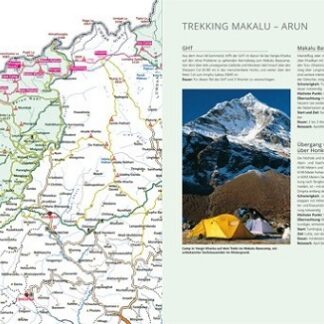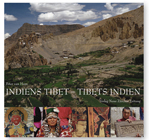Tales from the Himalaya
CHF 53.30 incl. MwSt.
Short-term lack of stock. Available in approx. 10 days.
Tales from the Himalaya is essential reading for anyone with a stake in the Himalaya, whether a first-time traveller to the region, a trekker, a mountaineer, or simply someone who is captured by the allure of the high mountains.
This book tells epic stories of religion, science, politics, and society that define the lives of every man, woman and child in this highest of human habitats. Lavishly illustrated with an extensive bibliography, Tales from the Himalaya is an inspirational journey, a feast for the eye as well as the mind. Each tale is introduced by an episode from the author’s travels and climbs across the Himalayan range.
RELIGION
“The cultural foundation of life in much of the Himalayas remains Tibetan Buddhism. Th is esoteric off shoot of the Buddha’s teaching developed from the 7th century onwards but was only discovered by explorers and scholars a thousand years later. The first tale is about a remarkably different type of reality, how its mysteries were unravelled, and how it continues to survive despite political repression.”
SCIENCE
“The Himalayas are the highest mountain range in the world but also the youngest. The peaks continue to grow, and earthquakes remain an ever-present danger. The struggle to understand how these giant mountains formed began in the mid-19th century. Now we know that it’s the plates that do the talking. The second tale is one of intrepid exploration and scientific discovery.”
POLITICS
“The Chinese takeover of Tibet is the latest power play in the Himalayan region. Long ago, the Tibetans were the empire builders. In the 19th century, strongman Gulab Singh gobbled up parts of the Western Himalaya to create Jammu and Kashmir. During the Raj, the British commandeered the high mountains. The third tale is about politics and intrigue on an epic scale.”
SOCIETY
Rural existence in the Himalayas is hard. Terraced fields must be carved out of steep foothills; the growing season is short. In an isolated Nepal, a feudal hierarchy simply made things even harder. When the country opened in 1951, foreign aid poured in, but that didn’t prevent a Maoist insurgency taking root, toppling the King and transforming Nepal into a secular republic. The fourth tale is about a society struggling to survive.”
432 Pages
Recommendations on the topic
Documentations
Documentations
Documentations
Documentations
Documentations








